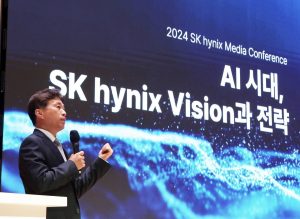Popular Keywords
- About Us
-
Research Report
Research Directory
Semiconductors
LED
Consumer Electronics
Emerging Technologies
- Selected Topics
- Membership
- Price Trends
- Press Center
- News
- Events
- Contact Us
News

SK hynix announced today that it recorded best-ever yearly performance with 66.1930 trillion won in revenues, 23.5 trillion won in operating profit with an operating margin of 35%, and 19.8 trillion won in net profit with a net margin of 30%. SK hynix’s yearly revenues marked all-time high, exc...
News

Ahead of SK hynix’s upcoming fourth-quarter results announcement, another Korean memory giant, Samsung, may be in trouble again. According to MoneyToday, the company has delayed the development of its 10nm-class sixth-generation (1c) DRAM by another six months, postponing the target date to June, ...
News

Amid market concerns that major memory firms have been gradually scaling down their legacy NAND production, the reports from Business Korea and Sedaily, citing Korea Customs Service data, validate the worries. In the fourth quarter of 2024, South Korea's NAND flash exports dropped 13.1% year-over-ye...
News

According to a report from ZDNet, SK hynix is reportedly planning to ship HBM4 samples to NVIDIA as early as June 2025, with full-scale product supply expected to begin around the end of the third quarter. The report notes that NVIDIA initially planned to equip its next-generation high-performanc...
News

A report from Nikkei highlights that, despite U.S. restrictions, China’s share of the global memory chip market has risen from virtually zero to 5% in just five years. This rapid growth poses challenges to global giants like Samsung Electronics, SK hynix, and Micron. Notably, according to Trend...